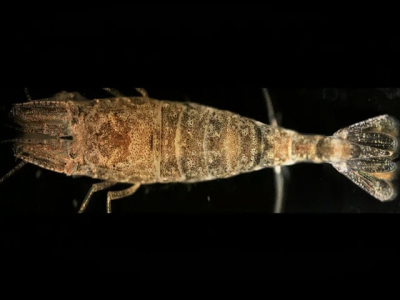The next big farmed shrimp species?

The establishment of a successful larval rearing protocol for European brown shrimp can “be used to develop a large‐scale rearing system for C. crangon larvae in either flow‐through or recirculation systems”.
So claim researchers from Ghent University and the Flanders Research Institute for Agriculture, Fisheries and Food (ILVO), who have been investigating ways of rearing brown shrimp sourced from wild-caught broodstock.
The researchers note that brown shrimp (Crangon crangon) are a highly valued commercial species in Europe – with 26,000 tonnes of cooked brown shrimp, with a value of approximately €100 million, landed in the Netherlands, Germany, Belgium, France, Denmark and the UK during 2016.
However, they also note that a change in the market offers a fresh opportunity for the culture of the species, once certain challenges are overcome.
“In the past few years, the demand for large live shrimps (>70 mm) has increased, with a 20-30% higher sales value than cooked brown shrimps. Rising demand and high commercial value may make this species an attractive candidate for aquaculture,” they explain.
They argue that the failure of previous research projects to rear Crangon crangon in captivity, dating back to the mid‐1960s, was “due to several factors (feed, density, housing) that still need optimisation before an efficient and viable larviculture of this species will become possible”. As a result, to help overcome these challenges, they investigated a means of rearing larval brown shrimp and, in the process, optimising the design and operation procedures of a small‐scale static larval rearing system.
To obtain shrimp eggs they captured egg-bearing females using a small beam trawler. Once they had sourced the eggs, the focus of the project was on optimising larval survival via water temperature, feed selection, feeding regime and density.
The researchers made a number of breakthroughs, concluding that: “The trials suggest that the larvae can be reared at high densities of 300 larvae L‐1 with high survival of 73.5 (± 5.4)% under laboratory conditions.”
“In these systems, larvae can be fed exclusively Artemia nauplii according to a feeding regime which is adjusted based on major moulting events. Addition of microalgae may further increase survival by 10 percent. The information gathered during this research can be applied to further optimize larval development in either flow‐through or recirculation systems,” the researchers say.
Moreover, they express their belief that their success in establishing a larval rearing protocol for the species – from eggs to healthy juveniles, can “be used to develop a large‐scale rearing system for C. crangon larvae in either flow‐through or recirculation systems to maximize production of healthy juveniles”.
Related news
 Shrimp price drop worries farmers in Mekong Delta
Shrimp price drop worries farmers in Mekong Delta The price of white leg shrimps has dropped for over a week, worrying farmers in Mekong Delta especially when they are getting the harvest in.
 Farm exports meet barriers on the way to China
Farm exports meet barriers on the way to China China has fallen from the No 1 position on the list of Vietnam’s biggest rice export markets into the seventh position. The growth of seafood exports
 Việt Nam seafood exports to CPTPP member countries up 15 per cent
Việt Nam seafood exports to CPTPP member countries up 15 per cent Việt Nam’s seafood exports to the other 10 members of the Comprehensive and Progressive Agreement for Trans-Pacific Partnership (CPTPP) have increased sharply